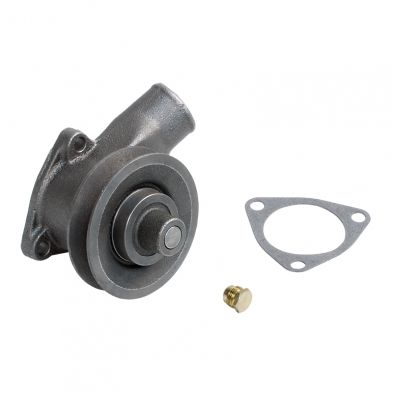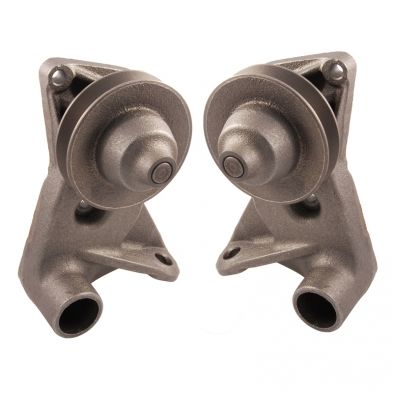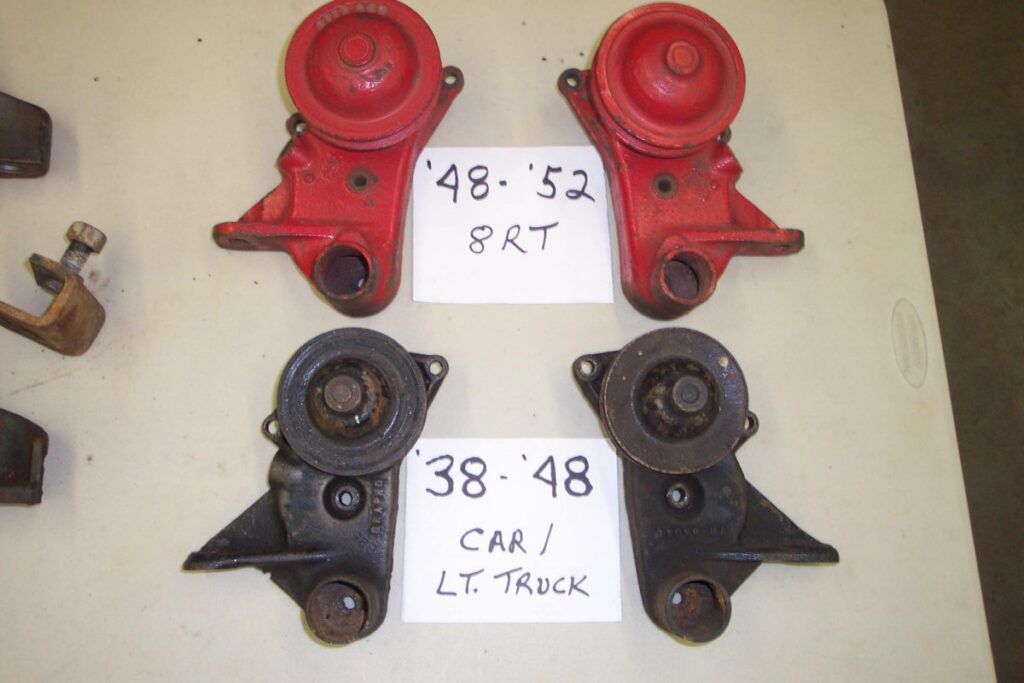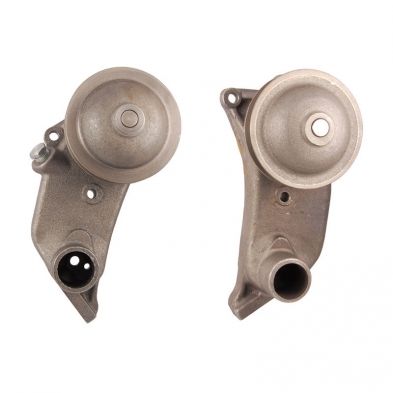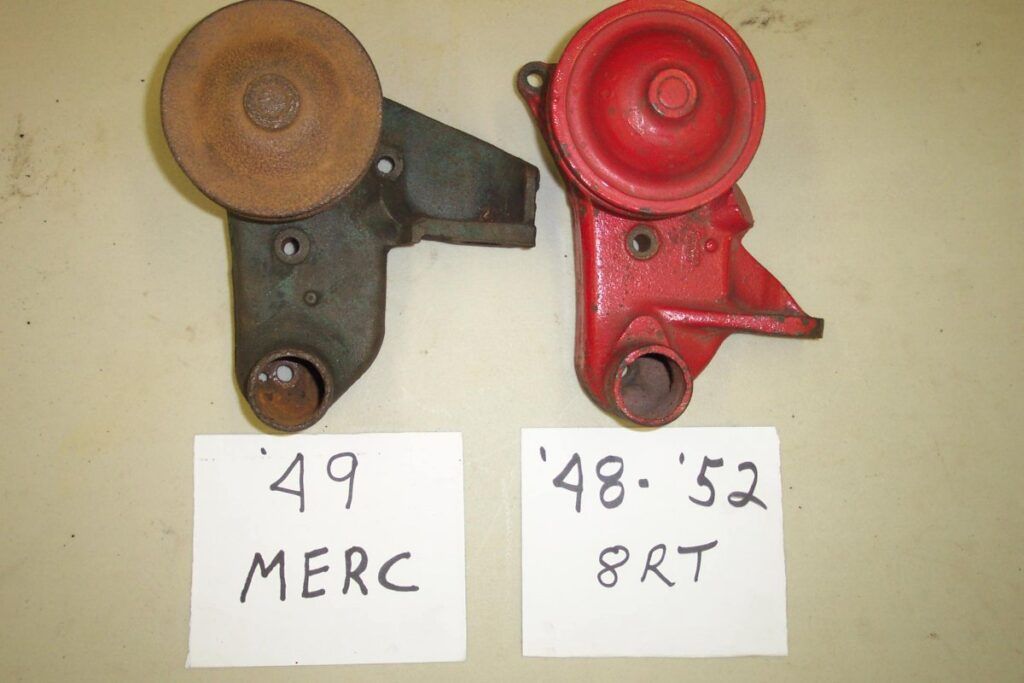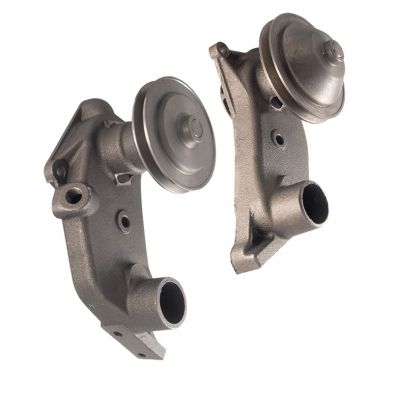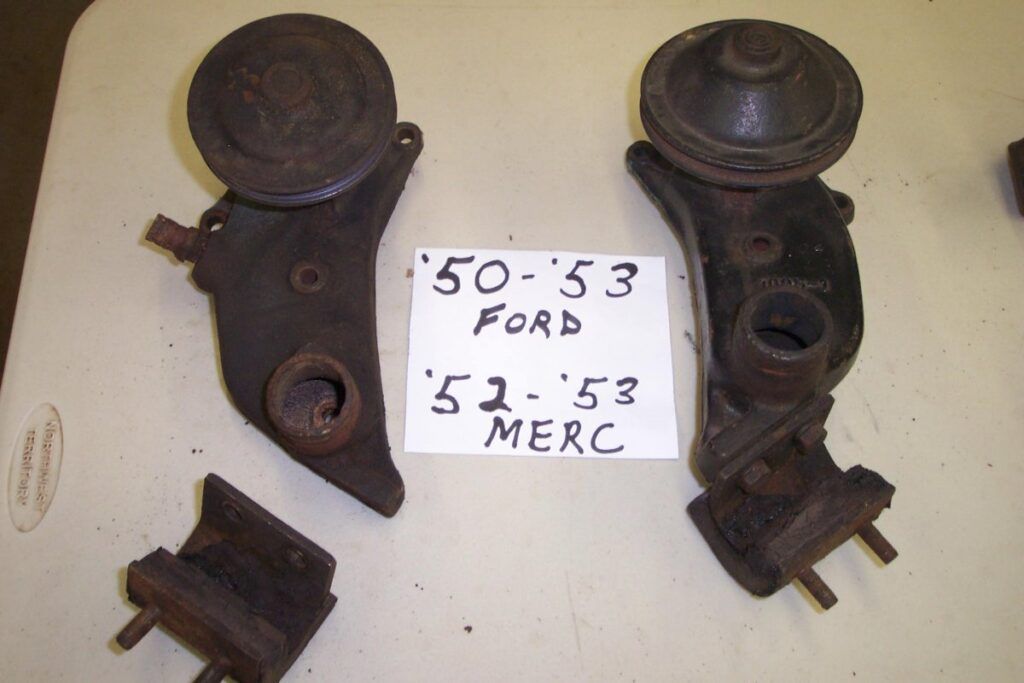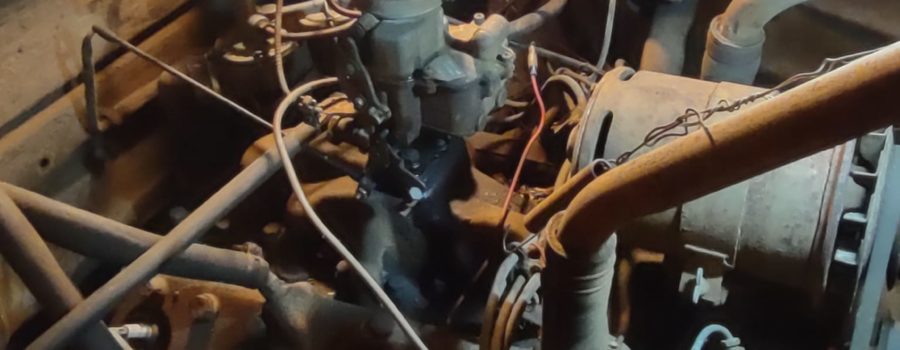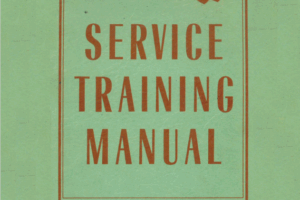The Ford Flathead V-8 engine powered Ford and Mercury vehicles from 1932 to 1954. The Ford Flathead is a valve-in-block engine and the valves open adjacent to the combustion chamber, rather than from the top, as in later engines. The four different V-8 flathead displacement sizes between 1932 and 1953 are 136, 221, 239 and 337 cubic inches.
This section covers external accessories mostly. Click this button above if you’re looking to ID your Flathead by details on the block.
STEP 1 – THE OBVIOUS THINGS TO LOOK FOR
One of the easiest ways to start ID’ing your flathead is to look at the heads. Ignore the castings numbers. Focus on the type of head itself. Flathead heads have 3 main shapes. Your going to mainly focus on the Water outlets.
Also, Don’t assume you know what your flathead is internally because of the casting on the heads. That’s because Flathead heads where commonly replaced. If the motor was not commonly serviced at a Ford dealer, the heads you got where the ones sitting on the shelf. This is why it is almost never accurate to use the Heads casting marks to ID your flathead.
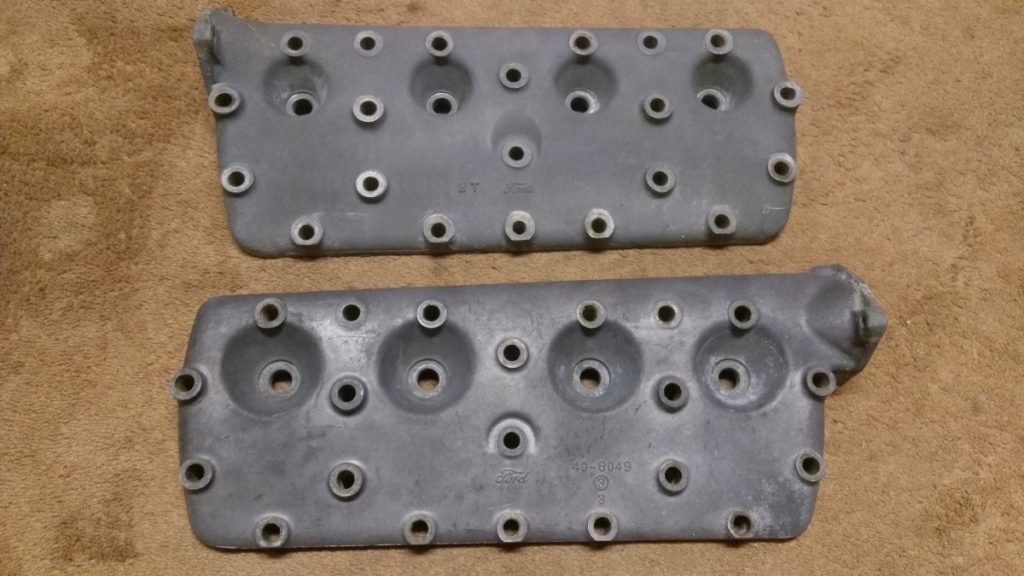
If your heads look like this, you’re rocking a 1932-1936 Ford Flathead. First gen flatty’s are more rare and how the whole things started. Congratulations. This was a great little power hose. The engine is harder to build than others years as the parts can be harder to find and more expensive. But we here in the Flat-Spot can help you find almost anything you need.
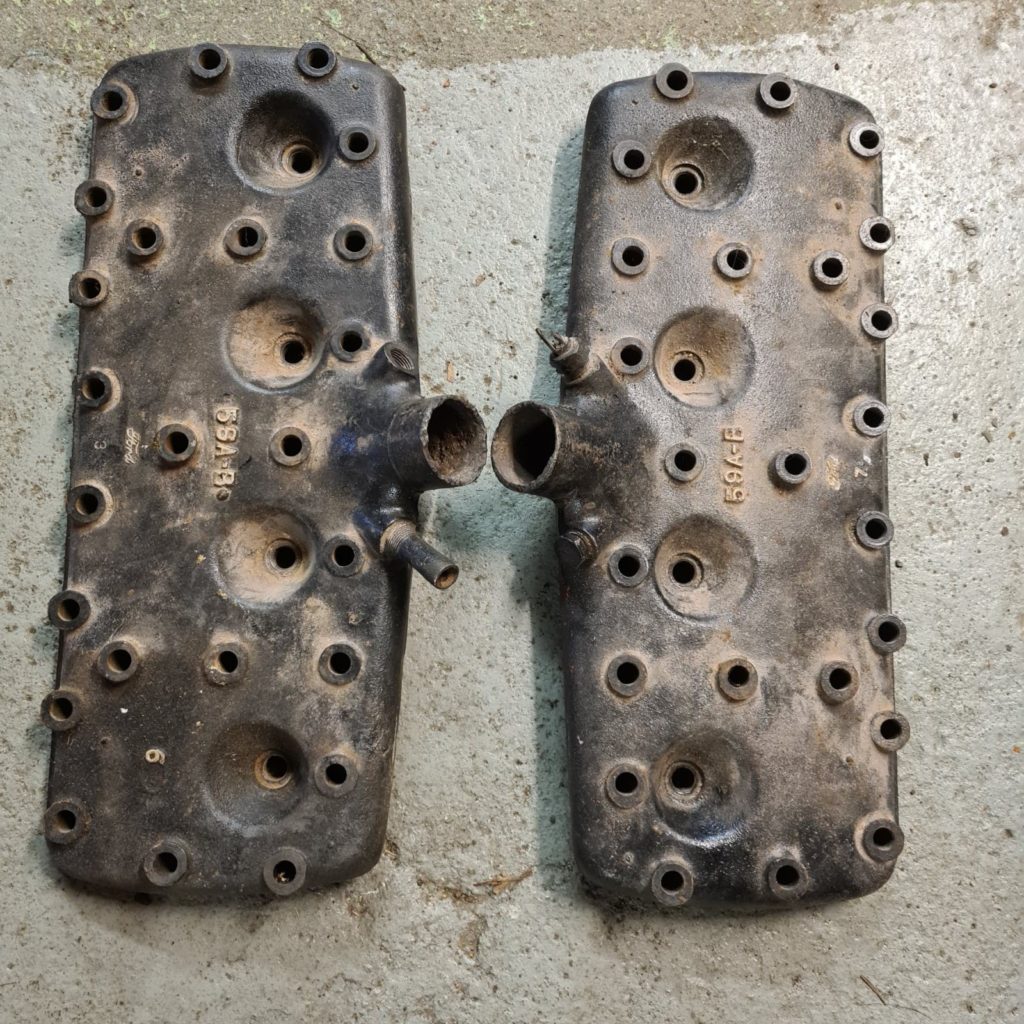
If your outlets look like this you have a 1937-1948 range flathead. These where a more common flathead and they are honestly the most eclectically desirable. There are two version of this head early heads had 21 studs where the later engines had 24. So that might also help you when it comes to narrowing your year down.
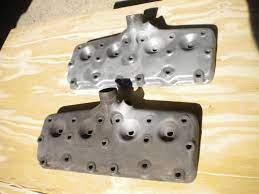
If you have very small Heads that look like these and your Flathead seems really small. Notice how they don’t have water outlets near the top neck. These heads are off a V860. The mini v8 form 1937-1941 which ford put out to try and capitalize on his company’s popularity for the cheap and economical V8. It was fords original goal to not offer an inline 6. But rather produce a Mini V8 to take on the larger sizes that pushed the inline 4 out of favor. This engine was not ideal for the larger Ford cars, but found a second life in small engine racing. The V860 was very popular with Midget race cars, speed boats, and some industrial applications like welders, compressors and water pumps due to their small size.

If your heads have the outlet in the front then lucky you. You have a 8BA flathead which ran from 1948-1953… 1954 if your Canadian. These engines where the last series in the continental US to be made and have some of the best Flathead’s had to offer when it comes to stock performance and engineering. As many of the issues had been resolved.
COUNTING YOUR STUDS
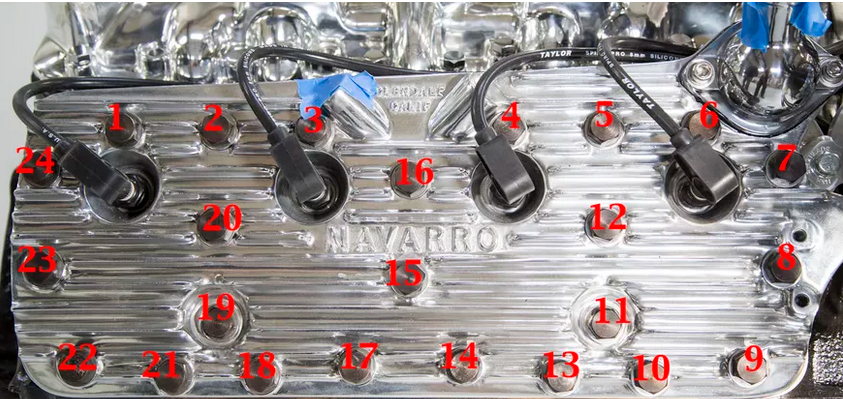
Take a Look at the Head Studs. Count the number of studs on the cylinder heads. According to Van Pelt Sales’ Ford Flathead Specifications web page, the count is as follows: all 136-cubic-inch engines have 17 studs, all 337-cubic-inch have 24 studs, 1932 to 1937 221-cubic-inch engines have 21 studs, 1938 to 1948 221- and 239-cubic-inch engines have 24 studs. The 1949 to 1953 239- and 255-cubic-inch engines have 24 bolts rather than 24 studs with nuts.
STEP 3 – SPARK CAN TELL YOU A LOT
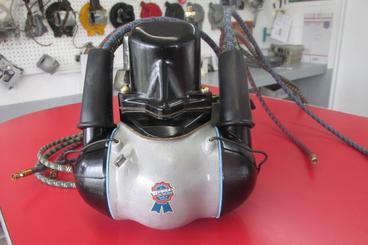
This is the first gen Helmet style distributor. These are commonly also referred to as the Foot Ball Distributor. They ran from 1932-1941. This style came in with a 2 bolt and 3 bolt coil. I am told that the 2 bolt is the older version.

This is the second gen 2 bolt distributor. These ran from 1941-1945 and are commonly called the Crab Style Distributor.
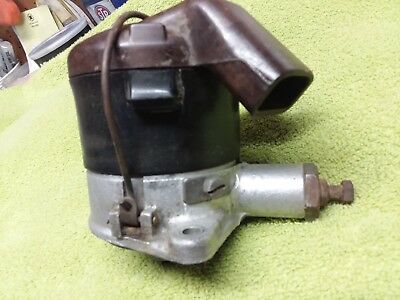
This distributor was common from 1946-1948. Because of war surplus the crab style cap is more commonly seen on the later engines. Due to popularity that style commonly replaced this version. The caps are interchangeable.
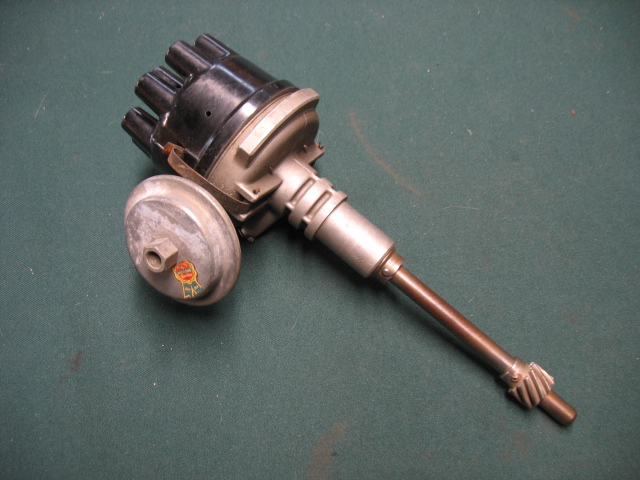
If your distributor is upright like a modern ignition system then your engine is a 8ba. This was the first year of adjustable timing, that could be done on the car while it was operating. Before they could only be adjusted on a bench with a specific tool.
STEP 4 – COOL IT!
